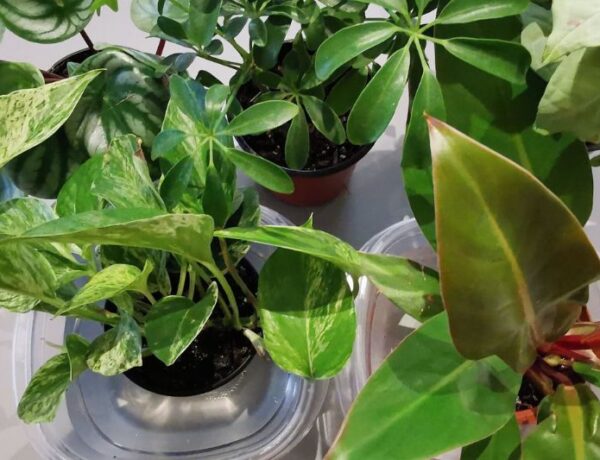Is your spider plant drooping and looking a bit sad? Don’t panic! This is actually a common issue many of us face. The good news? Figuring out what’s wrong usually leads to the right solution.
While it could be something simple like needing more water or something more trickier like pests, your best option is to look for additional symptoms. Here’s a guide to fixing those droopy leaves and bringing back that lovely green shine.
Table of Contents
Common Reasons Your Spider Plant is Drooping
1. Underwatering
Droopy leaves are often a sign of underwatering, but there are other clues you should look for too. If your spider plant’s leaves are also losing color, looking pale and limp, and the soil feels dry to the touch, it’s time for a drink.
How to fix: Stick your finger into the soil up to an inch. If it’s dry, give your plant a good soak. If water pools on the surface or runs down the sides of the pot, try bottom watering instead.
2. Overwatering
Spider plants are prone to root rot if the soil stays wet too long. Look for stunted growth, a foul smell from the soil, and mushy roots.
How to fix: Only water when the top inch of soil is dry. If you see signs of root rot, repot your spider plant into fresh soil ASAP.
3. not Enough Light
Insufficient light can cause drooping leaves. Spider plants thrive in bright, indirect light. Long periods in low light can make them sag.
How to fix: Place your spider plant in a well-lit area but avoid direct sunlight, which can scorch the leaves. East or north-facing windows work best!
4. Heat Stress
High temperatures can cause plants to lose water faster than they can absorb it, leading to drooping and wilting.
How to fix: Keep your spider plant away from heat sources and direct sunlight. In summer, you may need to water more frequently, but avoid overwatering.
5. Nutrient Deficiency
A lack of nutrients can also cause drooping. Spider plants need a balanced mix of nutrients like nitrogen, phosphorus, and potassium.
How to fix: Use a balanced, water-soluble fertilizer once a month or every other month during the growing season (spring and summer).
6. Transplant Shock
Recently repotted spider plants might experience transplant shock, resulting in drooping leaves.
How to fix: Give your plant time to adjust. Water it well and make sure it’s receiving the TLC it deserves!
7. Pests
Pests like spider mites, aphids, and scale insects can cause drooping leaves by sucking the life out of your plant. They often hide on the underside of leaves.
How to fix: Look closely at the hidden spots like the underside of leaves where pests often hide. If you find any pests, figure out what type they are so you can pick the right treatment for your spider plant.
Frequently Asked Questions
Make sure your spider plant gets bright, indirect light and adjust the watering routine. Let the soil dry out between waterings. If overwatered, let the soil dry more than usual before the next watering.
An overwatered spider plant has yellowing leaves, a mushy base, and soggy soil. You might also see brown, soft roots.
This could be due to overwatering, insufficient light, or nutrient deficiency.
It’s up to you! Hanging allows the leaves and spiderettes to cascade down, but they’ll be just as happy on a counter or shelf with the right light and care.
A happy spider plant has vibrant leaves, produces flowers and spiderettes, and shows nice growth.
Near a window with bright, indirect sunlight. They thrive away from direct sunlight and like consistent temperatures.
Look for roots growing out of the drainage holes or circling the soil surface. If the plant dries out quickly after watering, or if growth slows, it might be time to repot.
Water about once a week, allowing the top inch of soil to dry out between waterings. In winter, reduce watering to every other week or when the soil feels dry.
The leaves may droop, feel soft, and lose color. Unlike its usual perky stance, the plant will look wilted and pale.
Either way works. Bottom watering ensures the roots get a good soak, but top watering is fine too. Just avoid pouring water directly into the center of the plant to prevent rot.
Yes, trim the brown tips with sharp scissors to keep your plant looking neat.
Conclusion
Figuring out why your spider plant is drooping is the first step to giving it the TLC it needs. By paying attention to things like watering, lighting, temperature, and nutrients, you can really boost your plant’s health.
With the right care, your spider plant might even reward you with some beautiful flowers!






No Comments